Suzanne Guldimann is an author, artist, and musician who lives in Malibu and loves the Santa Monica Mountains. She has worked as a journalist reporting on local news and issues for more than a decade, and is the editor of the Topanga New Times. Suzanne has authored 11 books; her newest, “Life in Malibu II”, explores local history and nature. She can be reached at [email protected]
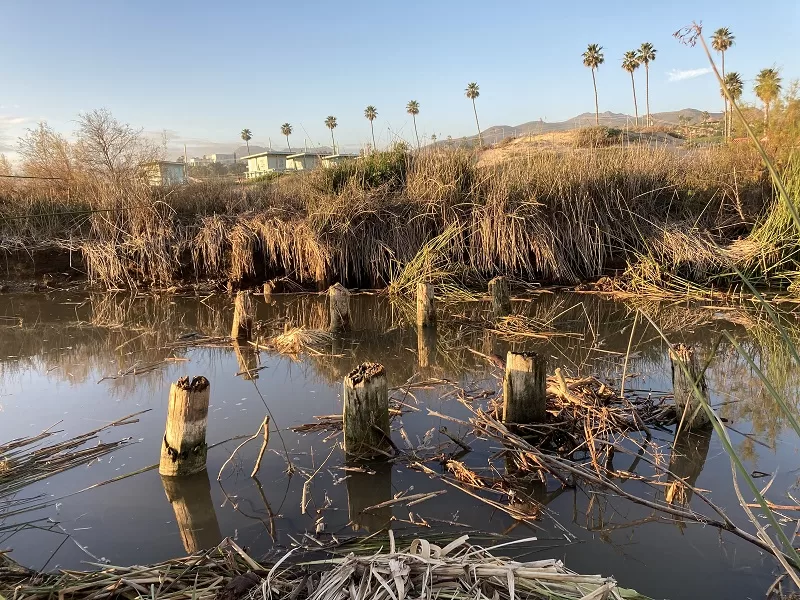
The posts emerged from the mud and debris in Zuma creek after the first round of major storms: two rows of four wooden posts. A mystery. I’ve lived here all my life and thought I knew the creek well. I had never seen these posts before.
I asked around. “Probably just an old movie set,” I was told, but I wasn’t convinced. When the flood had diminished and the ground was solid enough to take a closer look, I found that the structure, whatever it was, was far more extensive than it first appeared. There were at least three rows of posts, each spaced the same. There could easily be more, hidden under the silt and reeds of the estuary. This was a bridge, and a well-built one to have survived the onslaught of detritus the recent storms had swept downstream, including entire trees and tons of Woolsey Fire debris.
The only bridge that I knew of that had ever been built over this part of the creek was the bridge for the Hueneme, Malibu, Port Los Angeles Railway—Malibu’s legendary ghost train, built between 1905 and 1908. This fifteen-mile-long track never connected to any other lines. No steam engines ever traveled along it and its tracks, which were built in many places right on the beach sand. This wasn’t a train to travel on, it was one to keep other railways and travelers out of the Topanga, Malibu Sequit Rancho.
I’ve written a lot about the Rindge family and their railway over the years. I’m the author of numerous articles on the subject, two books on local history—Life in Malibu, volumes I and II. As I stood in the mud at the Zuma Lagoon looking at this set of old, rotted posts, I thought of the train, but it seemed almost impossible that these remnants could be that old. The two top experts who would have known the answer at once—lifelong local historians Tom Doyle and Ron Rindge—were no longer here to be asked. When sections of railroad track turned up on the beach after storms in 1978 and 1983, it was front page news. If these posts were the remnants of the railway bridge over Zuma, this was a news story, too, but where was the proof? Who would know?
I received no response from the state or the county or the National Park Service, but friends at the Adamson House Foundation agreed to make inquiries.
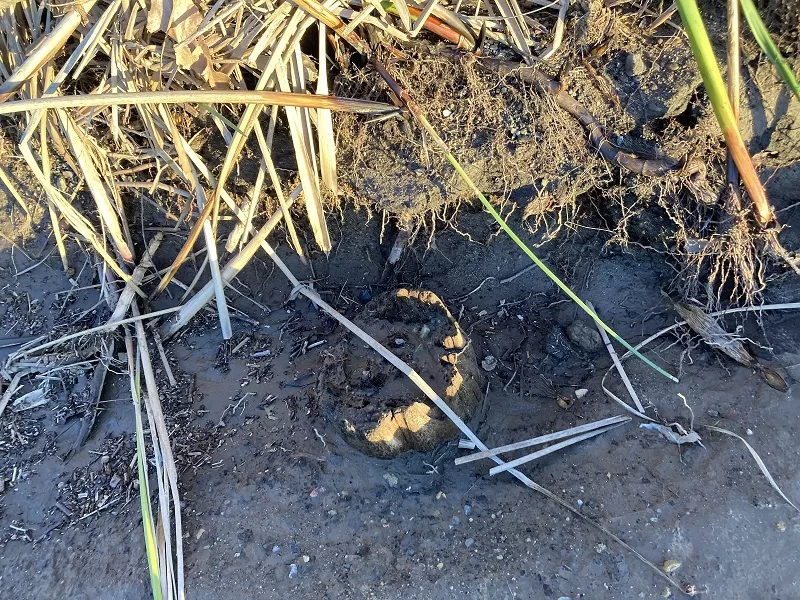
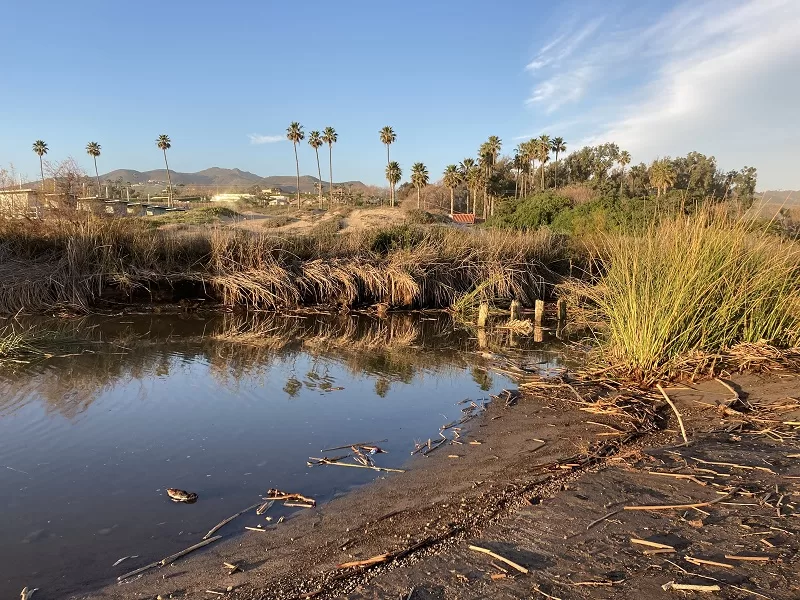
While I waited to hear back from the experts, I posted a photo on Instagram and received encouragement to keep looking. Local artist Bruce Trentham did research of his own and sent links to me, including one with a photo that showed a similar bridge over nearby Solstice Creek, c. 1910.
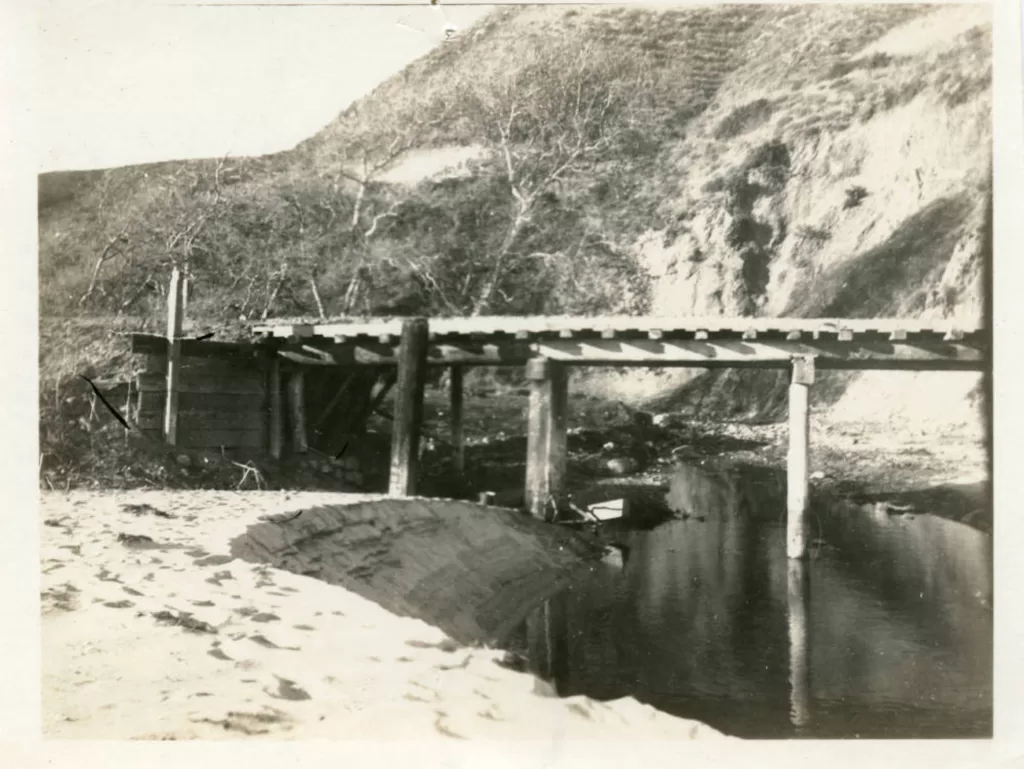
Ron Rindge, the grandson of Frederick and May Rindge, and his friend and fellow historian Tom Doyle weren’t here to ask, but their 2012 book Malibu Rails and Roads was a repository of some of their knowledge. I knew the railroad tracks went across Point Dume and down to the beach at what is now Birdview, where they ran along the base of the bluff. The book included photographs of a 1931 map Malibu showing the route in detail. Those images appear to confirm that it crossed Zuma Creek at the location where the posts are located. The book includes a photo from a different angle showing the series of round posts—four in a row—that supported the bridge of Solstice Creek, and one of workers building the bridge over Corral Creek in 1907, using the same kind of round posts.
I had a photo from my own collection of Malibu ephemera that showed the rails running along the base of the bluffs a little further down the coast at Escondido Beach, and crossing a smaller bridge over an unnamed creek.
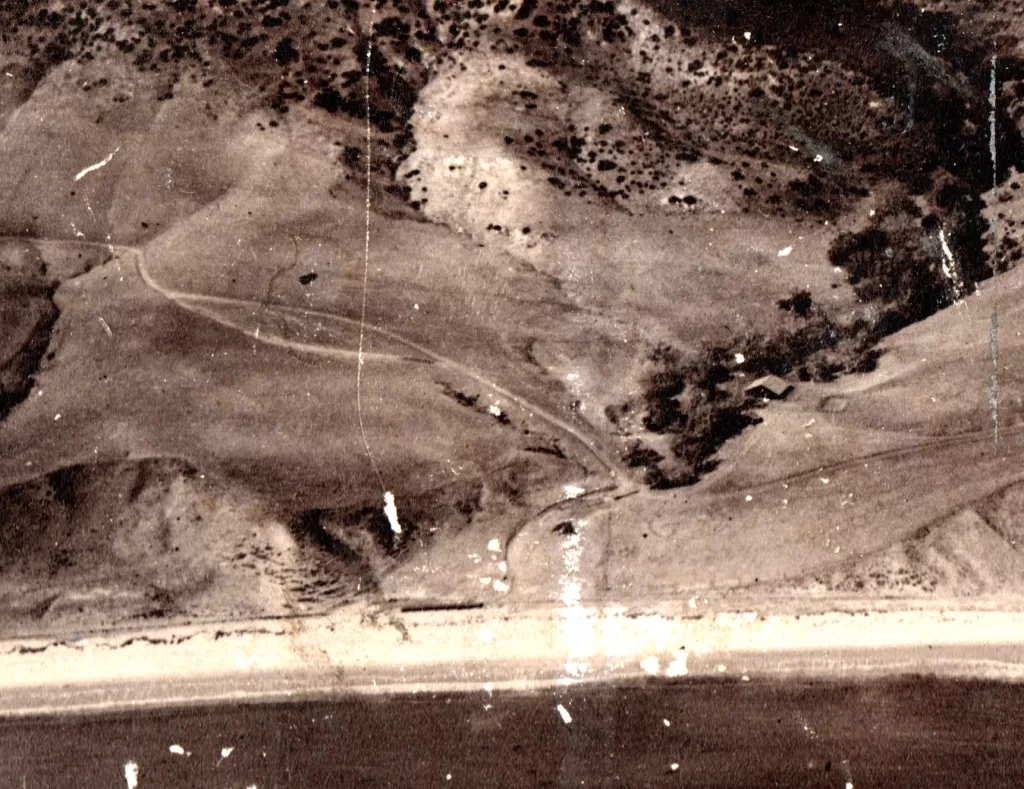
Additional poking around—to the detriment of my shoes—revealed five rows of four posts, spanning Zuma Creek, and left me convinced that there are more under the silt and reeds. I was 98 percent certain that I was looking at relics from the old Malibu train.
Frederick Hastings Rindge acquired the 13,000-acre Rancho in 1892. He was an astute New England businessman who invested the fortune he inherited from his father in practical and profitable things like utilities and real estate in Los Angeles. When the opportunity to acquire Malibu arose he jumped at it.
The property was one of the last intact Spanish land grants in the state. It was a true Spanish land grant, awarded in 1805, before Mexico took California from Spain, and it was almost completely undeveloped and uninhabited. Rindge had visions of building a “Riviera by the Sea”, but he fell in love with the beauty of the land. Instead of building a new city, he built a ranch house for his family, a retreat for his busy life in Los Angeles. In his book Happy Days in Southern California, he described it as “very near terrestrial paradise.”
Frederick wasn’t the only one with plans for the rancho. Southern Pacific Railway had designs on the Malibu coast as early as 1876. The railroad was a major player in the campaign to place the Port of Los Angeles in the Santa Monica Bay instead of at San Pedro. The railroad and its allies succeed in building the Port of Los Angeles—better known as the Long Wharf—at what is now Will Rogers State Beach.
For a few years, the “Port of Los Angeles” functioned as a way to get lumber and supplies to the western end of a burgeoning Los Angeles, but it was rapidly eclipsed by the much bigger port at San Pedro. This 4,700-foot-long pier was billed as the longest in the world, but it soon became a kind of roadside attraction and tourist destination.
That doesn’t seem to have troubled the canny directors of Southern Pacific. The track laid from Santa Monica to the Long Wharf was just the start of a longer route that would connect Los Angeles with Ventura. However, Southern Pacific, the mighty juggernaut that had carved up so much of the West with train routes but also wide-scale development plans failed to include the Rindges in the equation.
The Rindges purchased the Malibu Rancho the same year work began on the Long Wharf, but when Southern Pacific began a concerted push to extend its railway from the Long Wharf to Port Hueneme across the Malibu Rancho, the Rindges pushed back—hard.
They were aided by a loophole in the law that stated that there could only be one railroad right of way on a property. If they built their own railroad, the Rindges reasoned, they could keep Southern Pacific out. The Hueneme, Malibu, Port Los Angeles Railroad was incorporated in 1905, the same year that Frederick unexpectedly died.
May Rindge was left to battle Southern Pacific on her own. She became one of the first and only female presidents of a railway, and began laying track: 15 miles of it, from Carbon Beach to Encinal Canyon. It wasn’t easy. The Malibu pier was built to bring in supplies. Massive trestles were needed to cross Ramirez Canyon and Walnut Creek.
In many places, the tracks were laid right on the sand at the beach. They began to disappear as soon as they were built, but it didn’t matter. This train from nowhere to nowhere succeeded in keeping out the world—and Southern Pacific Railroad. May failed to stop the coast highway from being built a generation later, but to this day, the railroad turns inland at Ventura instead of following the coast into Los Angeles.
Almost nothing remains of the Hueneme, Malibu, Port Los Angeles Railway, except the legend, but like a lot of Malibu children, I grew up with stories of the ghost train. I always pictured it as a great locomotive steaming along beside the sea. We used to have a fog horn off Point Dume when I was small. In my mind the sound of that horn was somehow the sound of the ghost train passing on a foggy night. The remains of the Walnut Canyon trestle were just up the canyon from my childhood home. I still have a spike from the railroad on my desk as a paperweight. Even when I learned that there was never a locomotive, that no one except the Rindge family and their friends ever traveled that rail, and that the only thing that ran on it were a pair of diesel railcars, the romance remained.
My friend Robby Mazza, a member of the Adamson Foundation Board, put me in touch with longtime Adamson Foundation board member and local historian Jules Hershfeld. I sent him my photos, and he, in turn, checked with Damien Ruddy, the curator of the Adamson House Museum.
Damien confirmed that the posts “probably are the posts from the railroad bridge.”
Jules concurred. “The odds of those pilings being from the Rindge railroad are very high given the place where they were found,” he told me. “Our records and photos show that the railroad was built right on the sand for about 18 miles along with trestles over the arroyos. We do not have a photo of the railroad in that exact location but I’m pretty sure that those pilings were used for the railroad.”
All the evidence points to these posts being a remnant of the Hueneme, Malibu, Port Los Angeles Railway. Are there still rails under the sand, where the posts emerge from the bank of the creek? How long will these remnants be visible, before the silt returns to hide them again? I don’t have answers. I do know that this mystery will soon disappear again back into the mud, leaving only photos as proof that it was there.
Is this really one of the last intact remnants of Malibu ghost train? If it is, then it is a monument to the stubborn determination of the remarkable May Knight Rindge.
To read more about this story and its background go to https://topanganewtimes.com/2021/05/07/the-train-to-nowhere-travels-on-the-hueneme-malibu-port-los-angeles-railroad/












